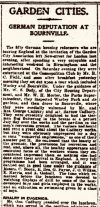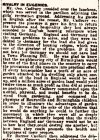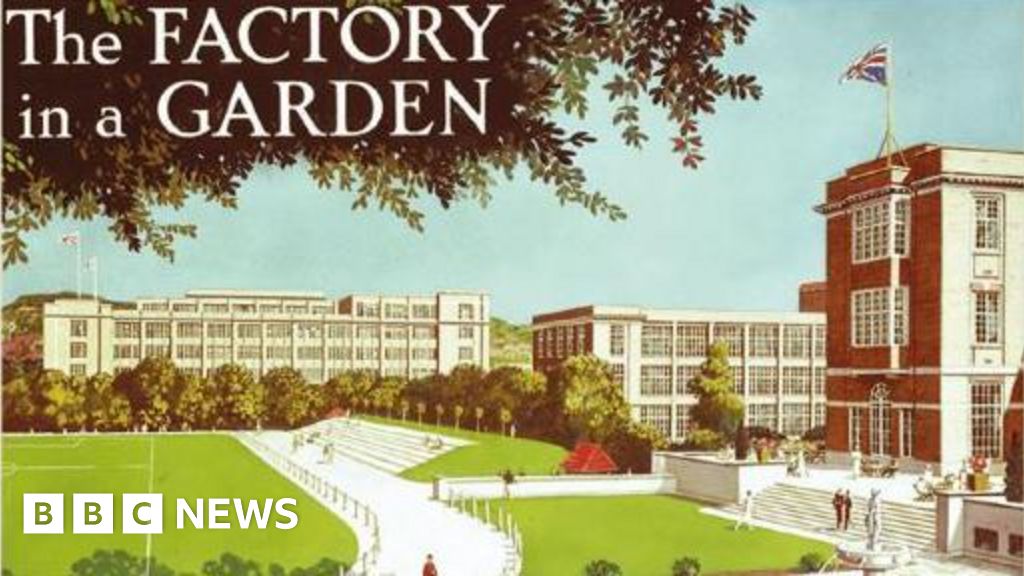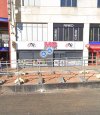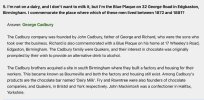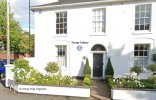Dennis Williams
Gone but not forgotten
Now we come to one of the most important and prolific families in Brum’s history - the CADBURYS. And there are a heck of a lot of them! There is much written about various branches of their commercial empires, and their many collective contributions to our City’s history and development, both on the Web, and on this Site, from previous contributors, notably Colin B; but I am going to try and put them in some sort of order for easy reference if I may, and litter the story with more pictures. Inevitably there will be repetition and overlap, for which I apologise in advance. I hope I do not tread on anybody’s toes… Any gross omissions will hopefully be put right by you, the many magnificent historians and sleuths lurking out there. https://birminghamhistory.co.uk/forum/showthread.php?t=36079
So where to begin? First a broad introductory resume by the immaculate Vivian Bird from his “Portrait of Birmingham” book dated 1970
RICHARD TAPPER CADBURY, descended from a line of West Country yeomen and woolcombers, started business in Binninghamas a silk mercer in 1794. He and his son, John, both Street Commissioners, were members of the committee which arranged the transfer of the commissioners' powers to the town council.

John had a tea and coffee business in Bull Street, but later he established a cocoa and chocolate factory in Crooked Lane, moving on to Bridge Street, off Broad Street, where eventually his sons, George and Richard, took over. In 1879 they erected a larger factory 4 miles from the city centre, calling Bournville, a name which Cadbury's chocolate and cocoa have made famous throughout the world.
It was a revolutionary move to take industry out of industrial surroundings, but for a food factory this semi-countryside was the right place. The Cadbury brothers were model employers paying more, giving shorter hours and a weekly half-holiday, and pioneering medical and dental services, sport facilities, pensions, and paid holidays.
Riding on horseback to a Men's Adult School in Severn Street, off Suffolk Street, early every Sunday morning, George Cadbury saw very bad housing and learned something about the unhappy human outcome of restricted home conditions. Note: The Severn Street school was opened by Joseph Sturge and his brother in 1845, when Richard Cadbury was 10 years old. In spite of its small beginnings, the School grew during his lifetime to thirty eight branch schools in different parts of Birmingham, numbering nearly 6000 scholars on their books. And it is still extant...

He concluded that a man and his family would lead happier, healthier, and more useful lives if their homes were more spacious and provided with gardens. So he began building such houses at low rents for his and other workers on land near the Bournville factory.
In I900 he founded the Bournville Village Trust, the trust deed decreeing that a house should occupy only a quarter of its site, the remainder being garden; that no factory should occupy more than a fifteenth of the site where it was built, and that roads should be wide with ample open spaces in the area. Bournville was incorporated in Birmingham in 1911, and a charming sylvan place it is, with its famous carillon tower facing the factory across the smooth greensward of extensive playing fields.
Over 9,000 are employed at Bournville, and it is doubtful if any factory in Britain entertained more visitors at the height of Cadburys' hospitality. They came in a constant procession of coaches, up to 100,000 annually, a policy that was being steadily curtailed as the firm reviewed any possible benefit that accrued from it, so that such visits ended completely in 1970. The Cadburys were teetotallers, and intoxicants are not allowed in the Bournville Works, where-very civilised indeed-the smoking which is naturally banned on the production lines is also prohibited in the offices. Bournville Estate is without a pub, and not until I969 was permission granted to the four residents' associations to apply for an occasional liquor licence for certain functions.


March 1969 saw a merger resulting in the name Cadbury Schweppes Ltd. - an alien sound to one brought up anywhere within sniffing distance of Bournville chocolate, which pervades the air for miles around in the right conditions of humidity and wind direction.
In 1943 Cadbury Bros. Ltd. published an educational booklet Our Birmingham, which asserted, "We have shown that Birmingham is already too big. It must not be allowed to grow still bigger. Further building on the outskirts of Birmingham should be forbidden, and a green belt of fields and farms should be preserved." Excellent, but instead, said the booklet, new towns of 30,000-50,000 population might be built beyond the green belt, complete in themselves with industries, amusements, and schools, and linked with Birmingham by fast roads and trains. This parochial passing of the buck; this attempt to sweep a city's urbanisation far beyond its boundaries, might be all right with a fixed population nationally, but not with one rapidly increasing. Birmingham's experience subsequent to 1943 has shown that the rape of the immediate green belt goes hand in glove..
More on Richard Tapper Cadbury, the Grandfather..
Richard Tapper Cadbury (1768 –1860) came to Birmingham in 1794 and started a linen draper's business in partnership with a fellow Quaker. Cadbury came from Exeter and he was born around 1768. His father was a maker of serge and he was apprenticed to a draper in Gloucester, after which he worked for others in the town. He entered into partnership with Joseph Rutte in Birmingham from 1794, and he married Elizabeth Head from Ipswich in 1796. Two years later the partnership with Rutte was dissolved. No idea why.
They had ten children: John, James, Ann, Maria, Lucretia, Sarah, Emma Joel, Elizabeth Head, Richard, Benjamin Head, and Joel. In addition, his wife Elizabeth ran the business in his absence. They lived in Islington Row (now Broad Street), and they had a sizable shop in Bull Street in the city centre selling silks and fabrics. The highlighted sons did the business with him...

And in 1824, Cadbury senior financed John Cadbury to start a tea and coffee business next door at No 93; Benjamin ran the main business from 1829. Richard was given a wage and was able to take on good works.
Cadbury continued to develop the business, but also took a role in civil affairs. He served on Birmingham General Hospital's Board and that of the Eye Hospital as well as getting involved in the affairs of the Town Council.
Cadbury was an abolitionist and in 1840 attended the World's Anti-Slavery Convention at Freemasons' Hall, London. Delegates came from several different countries and a commemorative painting, now displayed in the National Portrait Gallery, records all the notable people who were present. Tapper Cadbury is right at the back of the crowd and his portrait is one of the smallest.
Cadbury died in 1860, the same year that John Cadbury broke his financial links with his brother and shortly after left the business to be run in turn by his sons.
So where to begin? First a broad introductory resume by the immaculate Vivian Bird from his “Portrait of Birmingham” book dated 1970
RICHARD TAPPER CADBURY, descended from a line of West Country yeomen and woolcombers, started business in Binninghamas a silk mercer in 1794. He and his son, John, both Street Commissioners, were members of the committee which arranged the transfer of the commissioners' powers to the town council.
John had a tea and coffee business in Bull Street, but later he established a cocoa and chocolate factory in Crooked Lane, moving on to Bridge Street, off Broad Street, where eventually his sons, George and Richard, took over. In 1879 they erected a larger factory 4 miles from the city centre, calling Bournville, a name which Cadbury's chocolate and cocoa have made famous throughout the world.
It was a revolutionary move to take industry out of industrial surroundings, but for a food factory this semi-countryside was the right place. The Cadbury brothers were model employers paying more, giving shorter hours and a weekly half-holiday, and pioneering medical and dental services, sport facilities, pensions, and paid holidays.
Riding on horseback to a Men's Adult School in Severn Street, off Suffolk Street, early every Sunday morning, George Cadbury saw very bad housing and learned something about the unhappy human outcome of restricted home conditions. Note: The Severn Street school was opened by Joseph Sturge and his brother in 1845, when Richard Cadbury was 10 years old. In spite of its small beginnings, the School grew during his lifetime to thirty eight branch schools in different parts of Birmingham, numbering nearly 6000 scholars on their books. And it is still extant...
He concluded that a man and his family would lead happier, healthier, and more useful lives if their homes were more spacious and provided with gardens. So he began building such houses at low rents for his and other workers on land near the Bournville factory.
In I900 he founded the Bournville Village Trust, the trust deed decreeing that a house should occupy only a quarter of its site, the remainder being garden; that no factory should occupy more than a fifteenth of the site where it was built, and that roads should be wide with ample open spaces in the area. Bournville was incorporated in Birmingham in 1911, and a charming sylvan place it is, with its famous carillon tower facing the factory across the smooth greensward of extensive playing fields.
Over 9,000 are employed at Bournville, and it is doubtful if any factory in Britain entertained more visitors at the height of Cadburys' hospitality. They came in a constant procession of coaches, up to 100,000 annually, a policy that was being steadily curtailed as the firm reviewed any possible benefit that accrued from it, so that such visits ended completely in 1970. The Cadburys were teetotallers, and intoxicants are not allowed in the Bournville Works, where-very civilised indeed-the smoking which is naturally banned on the production lines is also prohibited in the offices. Bournville Estate is without a pub, and not until I969 was permission granted to the four residents' associations to apply for an occasional liquor licence for certain functions.
March 1969 saw a merger resulting in the name Cadbury Schweppes Ltd. - an alien sound to one brought up anywhere within sniffing distance of Bournville chocolate, which pervades the air for miles around in the right conditions of humidity and wind direction.
In 1943 Cadbury Bros. Ltd. published an educational booklet Our Birmingham, which asserted, "We have shown that Birmingham is already too big. It must not be allowed to grow still bigger. Further building on the outskirts of Birmingham should be forbidden, and a green belt of fields and farms should be preserved." Excellent, but instead, said the booklet, new towns of 30,000-50,000 population might be built beyond the green belt, complete in themselves with industries, amusements, and schools, and linked with Birmingham by fast roads and trains. This parochial passing of the buck; this attempt to sweep a city's urbanisation far beyond its boundaries, might be all right with a fixed population nationally, but not with one rapidly increasing. Birmingham's experience subsequent to 1943 has shown that the rape of the immediate green belt goes hand in glove..
More on Richard Tapper Cadbury, the Grandfather..
Richard Tapper Cadbury (1768 –1860) came to Birmingham in 1794 and started a linen draper's business in partnership with a fellow Quaker. Cadbury came from Exeter and he was born around 1768. His father was a maker of serge and he was apprenticed to a draper in Gloucester, after which he worked for others in the town. He entered into partnership with Joseph Rutte in Birmingham from 1794, and he married Elizabeth Head from Ipswich in 1796. Two years later the partnership with Rutte was dissolved. No idea why.
They had ten children: John, James, Ann, Maria, Lucretia, Sarah, Emma Joel, Elizabeth Head, Richard, Benjamin Head, and Joel. In addition, his wife Elizabeth ran the business in his absence. They lived in Islington Row (now Broad Street), and they had a sizable shop in Bull Street in the city centre selling silks and fabrics. The highlighted sons did the business with him...
And in 1824, Cadbury senior financed John Cadbury to start a tea and coffee business next door at No 93; Benjamin ran the main business from 1829. Richard was given a wage and was able to take on good works.
Cadbury continued to develop the business, but also took a role in civil affairs. He served on Birmingham General Hospital's Board and that of the Eye Hospital as well as getting involved in the affairs of the Town Council.
Cadbury was an abolitionist and in 1840 attended the World's Anti-Slavery Convention at Freemasons' Hall, London. Delegates came from several different countries and a commemorative painting, now displayed in the National Portrait Gallery, records all the notable people who were present. Tapper Cadbury is right at the back of the crowd and his portrait is one of the smallest.
Cadbury died in 1860, the same year that John Cadbury broke his financial links with his brother and shortly after left the business to be run in turn by his sons.
Last edited by a moderator:

